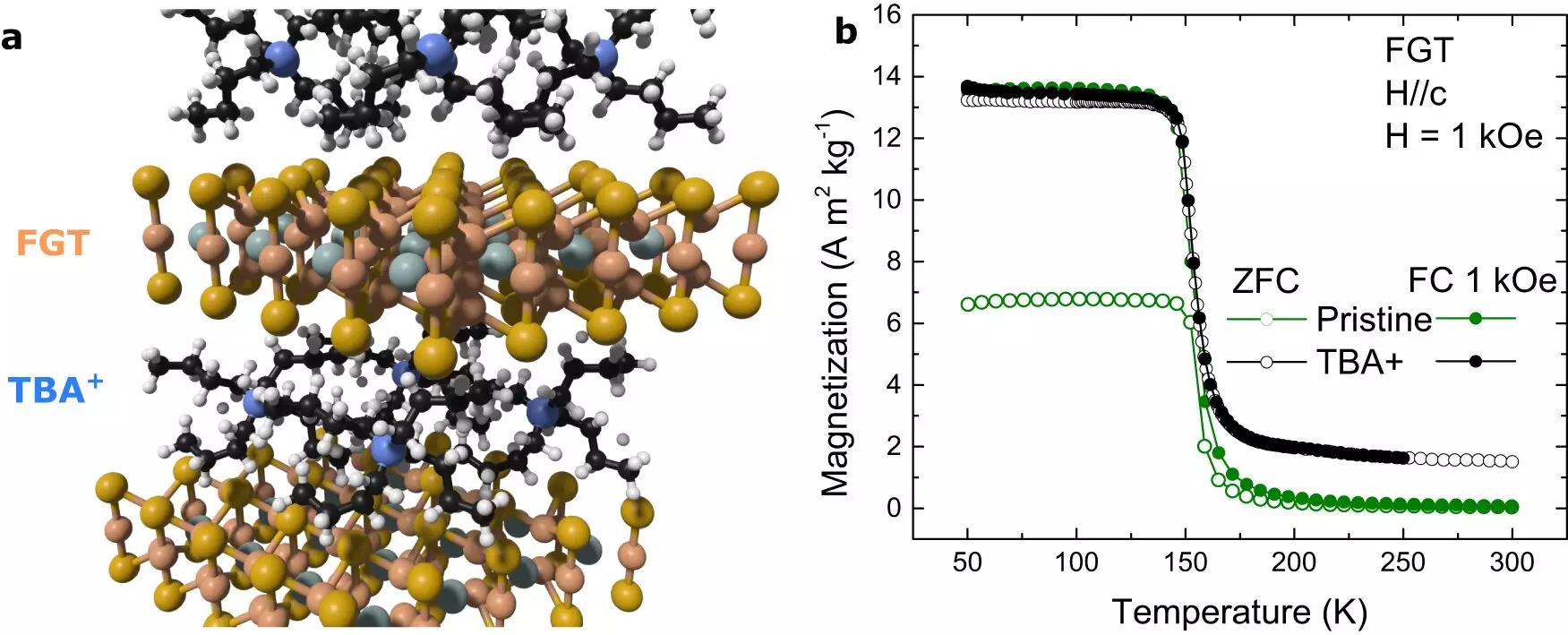In an increasingly data-driven world, the demand for high-capacity data storage and faster computing capabilities is growing. Researchers are constantly seeking new materials that can meet the expectations of consumers. One of the key questions they ask is how to design materials that can store data efficiently, at a lower cost, and with reduced power consumption. Srinivasa Singamaneni, an associate professor in the Department of Physics at The University of Texas at El Paso, is at the forefront of this research. Singamaneni and a team of UTEP physicists have made an exciting discovery that could potentially revolutionize the field of computational power.
Singamaneni’s team is exploring the use of a new type of magnet known as van der Waals magnets. Traditionally, magnets have been widely used in various tools such as laptops, speakers, headsets, and MRI scanners. However, these traditional magnets could be replaced by quantum magnets in the future. Quantum magnets, specifically the newly discovered 2D magnets, have an incredibly small size, making them highly promising for the computing world. The challenge, however, is that van der Waals magnets have only been known to work at temperatures below freezing.
Singamaneni and his team collaborated with scientists from Stanford University, The University of Edinburgh, Los Alamos National Lab, the National Institute of Standards and Technology (NIST), and Brookhaven National Lab to address the temperature limitations of van der Waals magnets. By adding a low-cost organic material called tetrabutylammonium between the atomic layers of the magnet, they were able to overcome the temperature constraints. The inclusion of tetrabutylammonium enabled the magnet to function at temperatures up to 170 degrees Fahrenheit. This breakthrough has significant implications for the practical applications of van der Waals magnets, as it opens doors for their use in a wider range of environments.
What sets Singamaneni’s research apart is his unique chemical treatment approach. By applying a simple chemical treatment to the magnet, he and his team were able to push the boundaries of 2D magnetism, paving the way for transformative advancements in the industry. The team has successfully demonstrated the potential of these magnets at the laboratory level. However, their work is far from over. Singamaneni and his collaborators plan to continue studying and refining the material to optimize its use in computing.
The research study involved a team of scientists from various institutions, including UTEP, Stanford University, NIST, The University of Edinburgh, Los Alamos National Lab, and Brookhaven National Lab. This interdisciplinary collaboration brought together experts from different fields to contribute their unique knowledge and perspectives. The joint effort allowed for a comprehensive exploration of the material’s properties and potential applications.
The groundbreaking research conducted by Singamaneni and his team has the potential to transform the future of computing. By overcoming the temperature constraints of van der Waals magnets through a simple chemical treatment, they have opened up new possibilities for their practical use. As the demand for faster and more efficient computers continues to grow, the development of advanced materials like these quantum magnets becomes increasingly crucial. The collaborative effort between researchers from different institutions demonstrates the importance of multidisciplinary approaches in pushing the boundaries of scientific knowledge. With further study and refinement, these quantum magnets could play a key role in shaping the future of computing technology.


Leave a Reply